All About Butt Cutting Boards
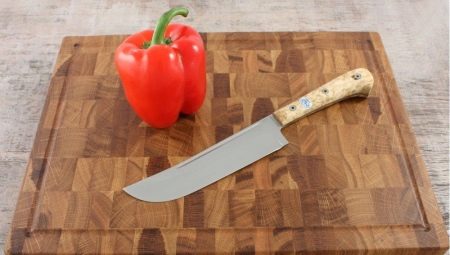
Once upon a time, the traditional and unique (virtually no options) wooden cutting board had nothing to replace. Relatively recently, plastic and glass products have appeared in kitchens, which housewives quickly liked. But not everyone. Someone fundamentally refuses to use plastic, someone does not like to work with "noisy" glass. However, thin wooden cutting boards lose their working appearance rather quickly, require deeper rinsing and even raise numerous questions from the point of view of aesthetics. But there is a way out - end cutting boards.
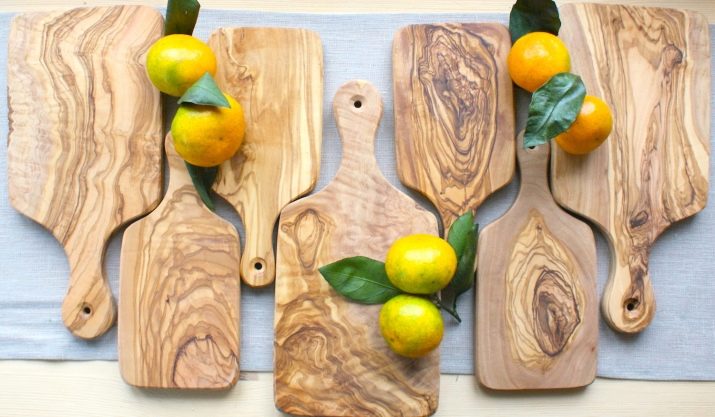
Peculiarities
They have known their peak of popularity quite recently: with the advent of Instagram, hostesses of the whole world began to understand without magazine tendencies what is in fashion today, what is really stylish, cozy and comfortable. In many kitchens of the owners of Western accounts, "thick", solid-looking cutting boards have appeared. The usual kitchen scene was changing, and the demand for Scandi-style household items (and others like it) grew very high. Shops began to pay attention to impressive products, and enterprising artisans and private firms responded to the current request.
But end boards were invented a long time ago, when not just Instagram, but even electricity was not available. The first end board was a regular cut from a tree with a fairly rough finish, but still quite comfortable.
A high-quality end board can even weigh several kilograms, and its price is much higher than a penny "thin piece of wood". But these are not just rough boards made of saw cuts: a modern end board is manual, rather hard and painstaking work.
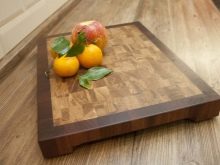

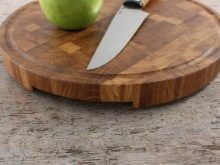
You need a special wood, a safe, non-toxic glue, a special sanding of each bar, a fit. And also processing with special oil in a series of layers. Even the most hardworking craftsman will not make one product in a day: the work takes 4-5 days, if you include drying here. But the result is not just a kitchen accessory, but a faithful, durable, durable assistant in the most important culinary manipulations.
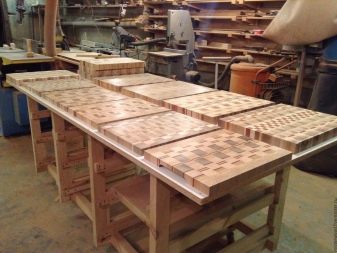
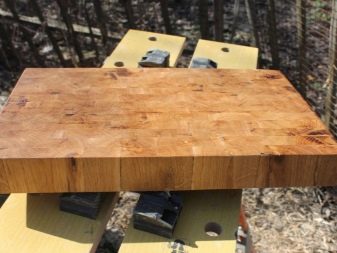
Advantages and disadvantages
There are definitely more advantages. And if they cause you doubts, probably theoretical knowledge cannot be compared with practice: it is enough to spend one day in the kitchen with an end board, as you simply will not want to return to other options for cutting.
Here is a description of 8 indisputable advantages of an endboard.
- The structure of the board is such that the end boards retain their original appearance (very aesthetic and solid) for as long as possible. Their durability is beyond praise. And this is ensured by a special gluing of wood fibers, due to which they are parallel to the movements of the knife. The knife does not cut them, but simply opens them, to put it simply. And after cutting, most of the fibers are closed back. That is why the cuts on the product will not be visible for a very long time, several years.
- The most durable types of wood are taken; they will not split when dropped. On a thin board, when shredding, the risk of the thin chips flying is very high. With the end board, this is out of the question: the safety of your culinary experiences remains in effect.
- When the master finishes making the board, he must coat it with mineral oil.... And the owner himself must do the same during operation. It's not just obsessive aesthetic requirements: the mineral oil helps the endboard stay water-repellent.
- Endboards are anti-microbial in design. As already mentioned, the fibers of the wood are pulled apart, not cut. And they very quickly close back together, so bacteria have no chance of getting inside. But thin wooden boards are often reproached for this.
- The functionality of their board does not lose for a very long time. Cutting meat, fish, minced meat, noodles, vegetables - any manipulations can be performed on a cutting board of this type.
- The end board can also be used for serving dishes - this is facilitated by its attractive appearance. Even if you are caught off guard by spontaneous guests, slice the sausage (meat, ham), vegetables, herbs and cheese and serve it all right on the board. You can also put a small saucepan there. Rest assured, guests will love it, they will consider you a modern and creative person - and it doesn't take much time and unnecessary panic to organize a dinner like this.
- No complicated board care... Together with it, you should purchase a bottle of mineral oil (or flaxseed), and wipe the board with it after use. The tree should be pre-washed and dried.
- Ease of use. The manufacturer mainly makes models with legs, which are equipped with a non-slip coating. The board does not slip, the owner is protected from injury.
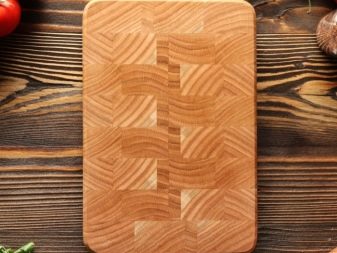
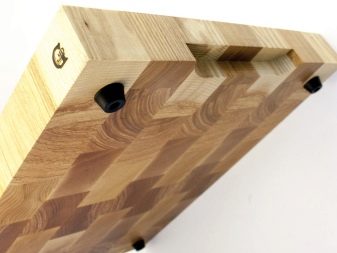


It remains only to list the cons - there are two of them.
- Price - it is significantly higher than that of thin boards. But the end version will also last much longer, and from the point of view of sanitary condition it is many times more reliable.
- The weight - the board is heavy, no doubt about it, but this is hardly such a drawback. She will fall less often, will not slip out of her hands.
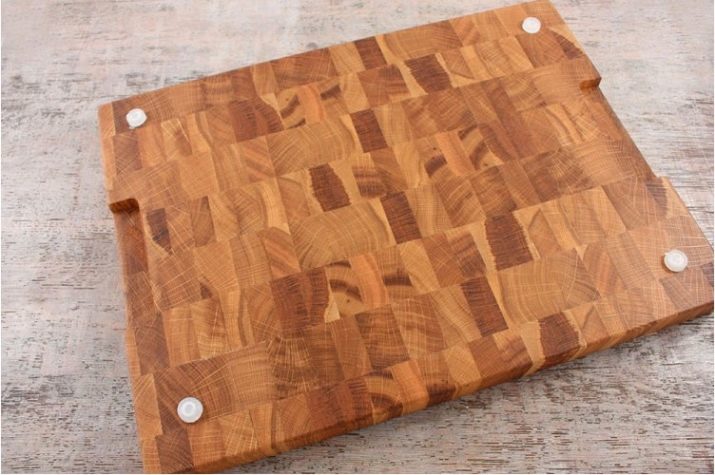
Dimensions and shape
Cutting boards can be different in shape: square, round, oval, elliptical. Which one to choose is a matter of the owner's convenience. For some, the square version is more practical, someone accepts only the round one - there can be no objective advice here.
As for the size, here you can estimate the length, width and height. The length can be from 10 to 70 cm, the width - from 10 to 45 cm, and the height - from 3 to 8 cm.More often, they buy boards of 30x40 cm with a thickness of 3 cm.
The type of end plate grip is also important.The slots for the grip can go on the sides from the bottom, there can be one hole in it from the edge, one in the corner, or even a board without slots and holes.
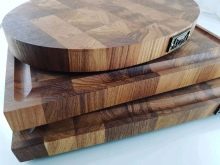


Tree species
The wood used for the manufacture of end products is a list of at least 10 items. Each type of material has its own pros and cons, important manufacturing differences.
Let's consider the main options.
- From pine. A cheap building material in short. Soft wood, inexpensive and affordable material, easy to process. But specifically for the board, the option is far from the best.
- Made of birch. The breed is of medium hardness, good in processing, but the birch accessory will turn black rather quickly, and it is also afraid of dampness.
- Beech. Strong and hard wood, but wood is characterized by strong hygroscopicity, it absorbs moisture, therefore such products are always varnished.
- Oak... Good material, high density. And although it is almost ideal for a cutting board, only one thing can confuse - the cost. Oak is not easy to process, because of such costs.
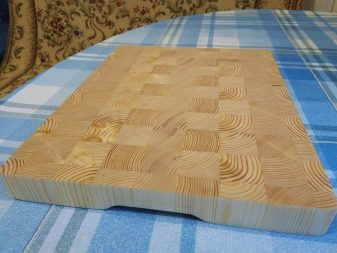
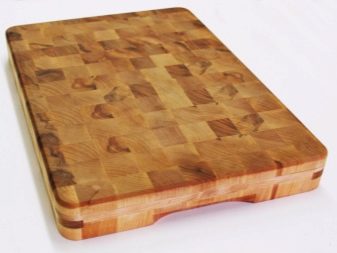

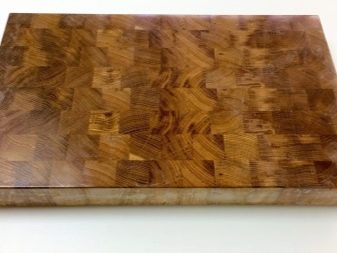
But they also make products from larch, from mountain ash, from bird cherry - but they are definitely inferior to oak. But almost all the presented boards still outperform thin cutting wooden boards. And this is due to the different arrangement of the fibers: for the end model, they are perpendicular to the cutting surface, not parallel.
Attention: if you choose this option for yourself, the knives will stay sharp longer, sharpening will become a rare event. For the layman, this circumstance, perhaps, is not so important, but for professionals it greatly facilitates the work.
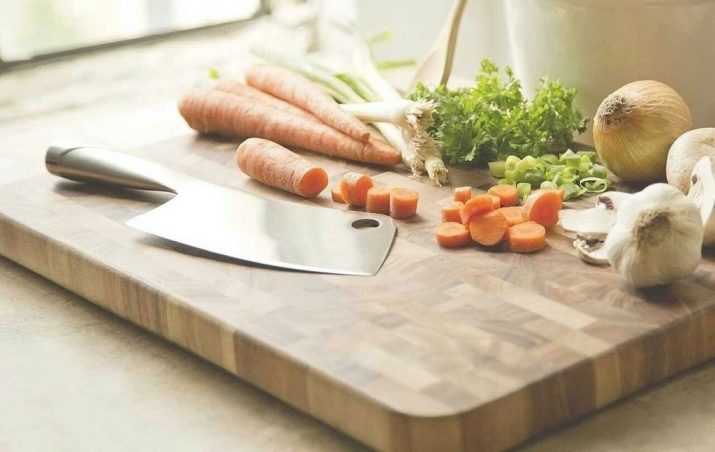
How to choose?
When choosing a kitchen accessory, pay attention to weaving options. The board consists of pieces, so craftsmen can make different patterns.
Consider the varieties that are more common than others.
- Checkerboard weaving... The master glues the blocks of two colors in a checkerboard pattern. If you wish, you can really play chess on such a board, although it is much more convenient to use it for slicing.
- Basket weaving. Bars of wood are intertwined, although this is only an appearance, the pattern is similar to a wicker basket.
- Complex ornament. A master can make a complex ornament on the surface according to an individual request, he can even cut out a whole picture. But the price for such a board will also increase, author's works are always more expensive (especially if you need a 3D effect or some other).
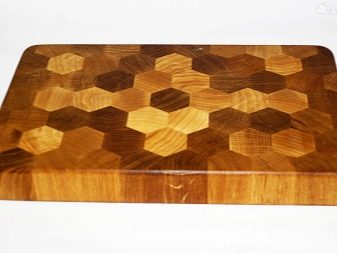

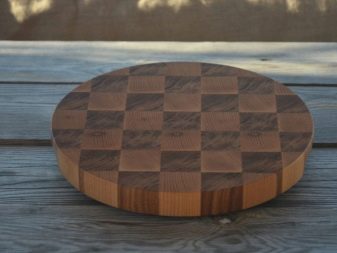
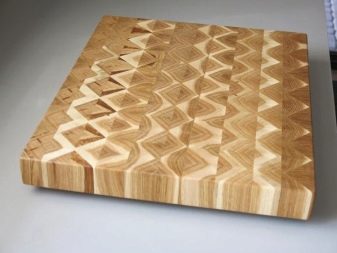
And also you can become the owner of a board with a container. It will be a very thick board, inside of which the container "hides", where the cut material goes. Typically, the container is made of stainless steel. In another way, such models are called end plates with gastronorm containers. Of course, this is convenient, but someone is still more accustomed to working on a classic board made of high-quality material. Therefore, there can be no objective comparison.
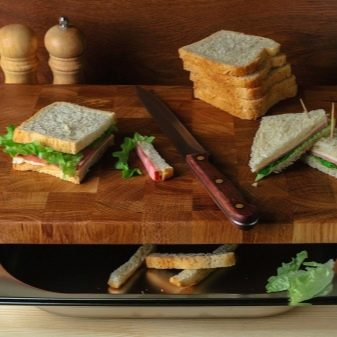

How to care?
All kitchen utensils will last longer if they are properly cared for.
The principles are not the most difficult.
- Do not leave the product wet. It is not necessary to pre-soak it before washing.
- After use, wash the board in warm water using standard detergents. Soap, vinegar and baking soda can also be used for washing if you are more familiar with household chemicals. After washing, you need to remove moisture with a towel, dry the board.
- You cannot wash such an item in a dishwasher (this is always indicated in the instructions).
- You can use an end board as a stand, as well as serve dishes on it, but only not hot. A common mistake is to use the board as a pan as this will quickly render it unusable.
- The board should also not be placed in the microwave and oven.
Do not store the board next to a stove, radiator, or any heat source. This deforms it, negatively affects the quality of wood fibers.Also, do not wash it with hot water!


The main thing is to properly treat the board with mineral oil. In the warm season, it is enough to do this once every one and a half to two months. When radiators are working in the house, you will have to speed up the procedure. On a perfectly washed and dried board, you should apply just a tablespoon of mineral oil: you no longer need it, your task is to soak the material, and not redeem it in oil.
Rub the oil in a circle using a cotton swab. It is important to cover the entire surface with oil: if you miss some places, the treatment will be of poor quality.
Treat the item "out of turn" if you notice that the liquid does not linger on the surface of the board, but is absorbed into it, if the product has lightened noticeably, if it has become rough to the touch, that knife cuts have become visible.
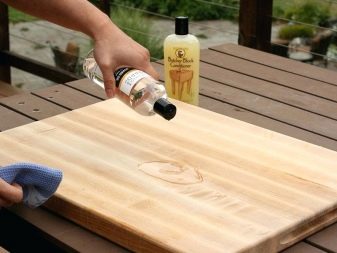
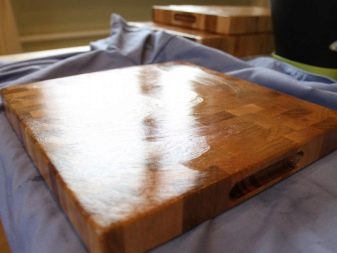
Suitable for processing:
- mineral oil (buy in carpentry and cosmetic stores);
- petroleum jelly (in pharmacies);
- lamp oil (in church shops).
Other impregnations are absolutely unnecessary, varnish or something else is not necessary at all. Moreover, you can damage the product and it will no longer be suitable for food cutting.

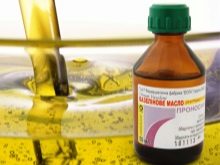
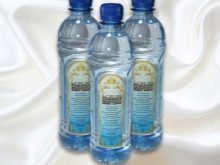
Correct care guarantees a long service life of the product. And it will delight you with durability, ease of use and impeccable aesthetic appearance. The purchase is definitely worth the money.
For making an end cutting board, see the following video.








